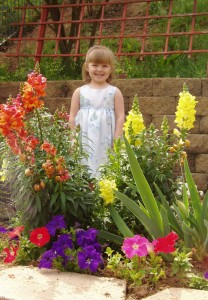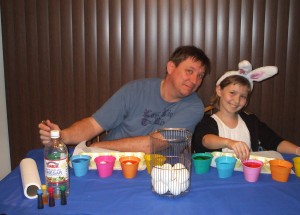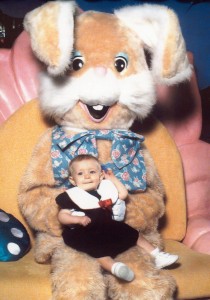
Just like the other holidays celebrated throughout the year, Easter has so many wonderful symbols and traditions. One is the symbol of the Easter Egg and the tradition of coloring the eggs. Another is the Easter Bunny who leaves a basket of treats for the children and also hides eggs for find on an Easter Egg hunt. Here is a little history about how and when these symbols and traditions came to be a part of our Easter celebrations.
Easter Eggs
In centuries long past, eggs were a symbol of fertility and new life. Many cultures, like the ancient Egyptians and Romans, used eggs for this reason during their spring celebrations. To Christians, the egg is a symbol that represents Jesus who was resurrected from his tomb three days after his crucifixion. During the Lenten season, certain foods were forbidden from being eaten, such as eggs. People hardboiled or otherwise preserved their eggs to be eaten at the end of the period of penance and fasting. The tradition of decorating eggs comes from this time, people would paint and decorate their eggs as they were waiting for the Lenten season to be over and then they would eat them on Easter Day as a celebration. The custom evolved over time and families today enjoy painting or dyeing their Easter eggs. (Please check out this month’s craft post, Jeweled Easter Eggs, for an elegant alternate style of decorating eggs)

The Easter egg represents a celebration of new life and people started to give eggs carved from wood and even precious stones as gifts. Around the world, different countries have their own traditions of the Easter Egg. The most elaborate Easter eggs are created in Eastern Europe. Known as pisanka in Poland and pysanky in the Ukraine, these beautiful eggs are created by carefully applying molten wax onto the surface of an egg and creating specific designs. The egg is then submerged into a dye for coloring; this brings out the lovely patterns. (When we went to Poland several years ago we purchased a couple of these eggs and I always bring them out at Easter to display in the china cabinet in our dining room)
Easter Eggs Stories: There are two Polish legends that tell the story of how colored eggs have become an Easter tradition. The first one is the story of the Virgin Mary delivering eggs to the soldiers at the cross, as she pleaded with them to be kind to Jesus she began to wept, her tears fell on the eggs and spotted them with brilliant colors. The second story tells the story of when Mary Magdalene went to the tomb to anoint the body of Jesus, she had brought eggs with her for her daily meal; when she arrived and uncovered the eggs, the white shells had taken on the colors of the rainbow.
Easter Bunny
 The custom of an Easter bunny seems to have originated in Germany. Rabbits and hares have long been an ancient symbol of fertility and springtime. Children were told stories about an “Easter Hare” who would lay special colored eggs and the tradition was that children would make nests for this magical creature to lay his eggs. When German immigrants came to America in the 1700s and settled in Pennsylvania they brought this custom with them. As the custom grew over the years across the United States, the Easter bunny would make his early morning deliveries and the nests became Easter baskets which were filled with the traditional colored eggs and other treats were added including chocolate bunnies and eggs, jelly beans and even small gifts.
The custom of an Easter bunny seems to have originated in Germany. Rabbits and hares have long been an ancient symbol of fertility and springtime. Children were told stories about an “Easter Hare” who would lay special colored eggs and the tradition was that children would make nests for this magical creature to lay his eggs. When German immigrants came to America in the 1700s and settled in Pennsylvania they brought this custom with them. As the custom grew over the years across the United States, the Easter bunny would make his early morning deliveries and the nests became Easter baskets which were filled with the traditional colored eggs and other treats were added including chocolate bunnies and eggs, jelly beans and even small gifts.
For my family, growing up there were always family traditions at Easter, the Easter Bunny always came to our house and left baskets filled with jelly beans and chocolate eggs. We also looked forward to getting a brand new dress, shiny patent white shoes and sometimes a spring hat to wear to church on Easter Sunday morning. After church we looked forward to an egg hunt and then sitting down to a delicious ham dinner.
What are some of your families Easter traditions?
